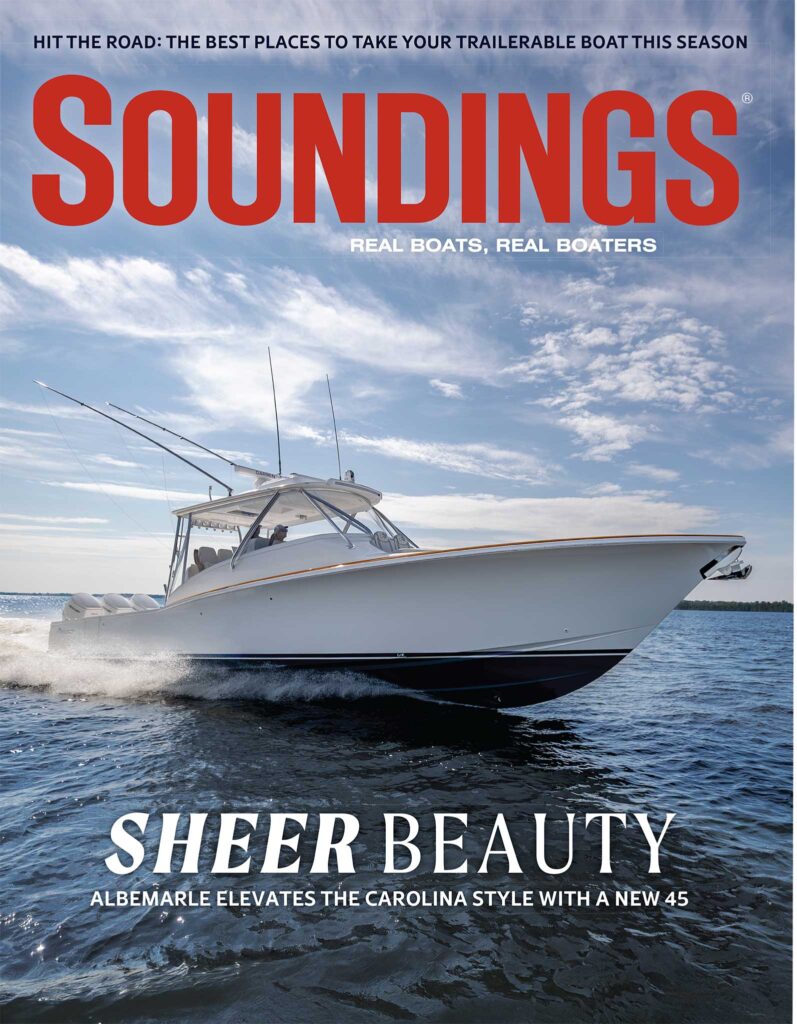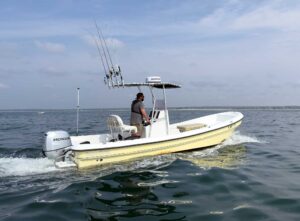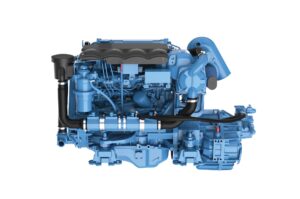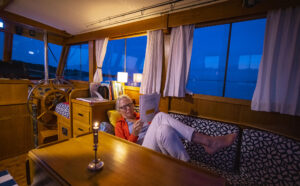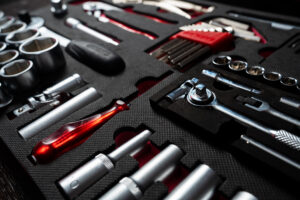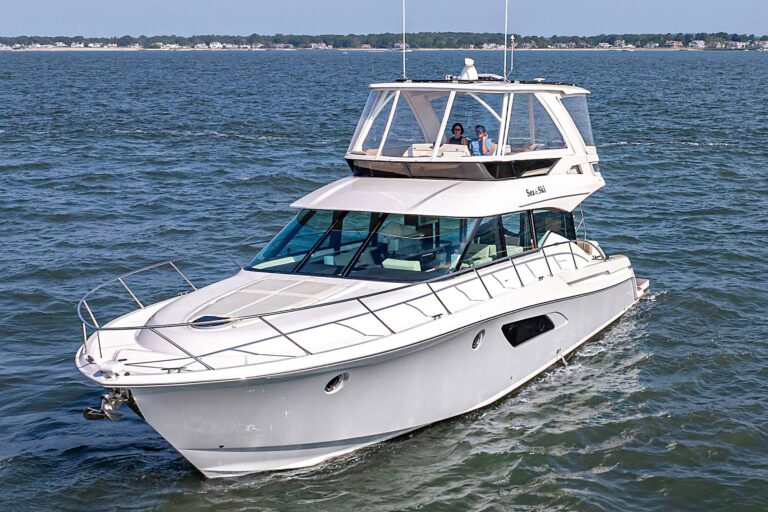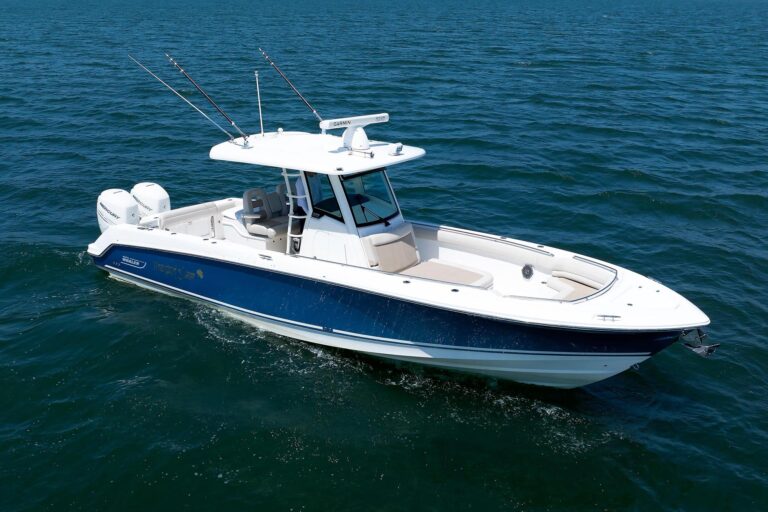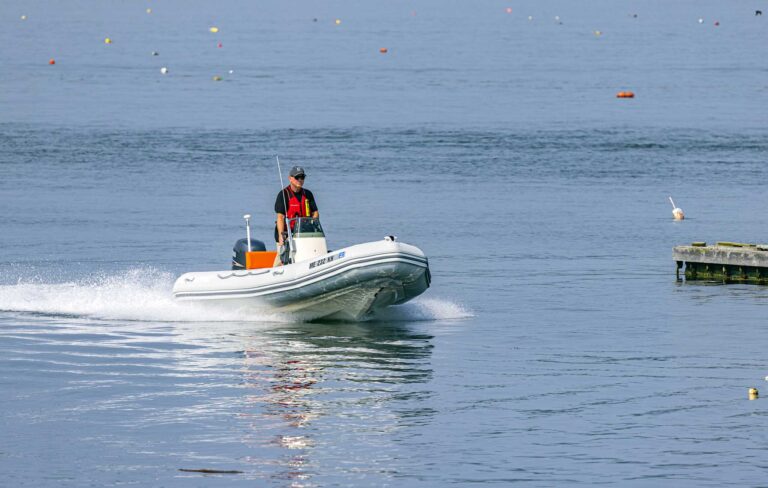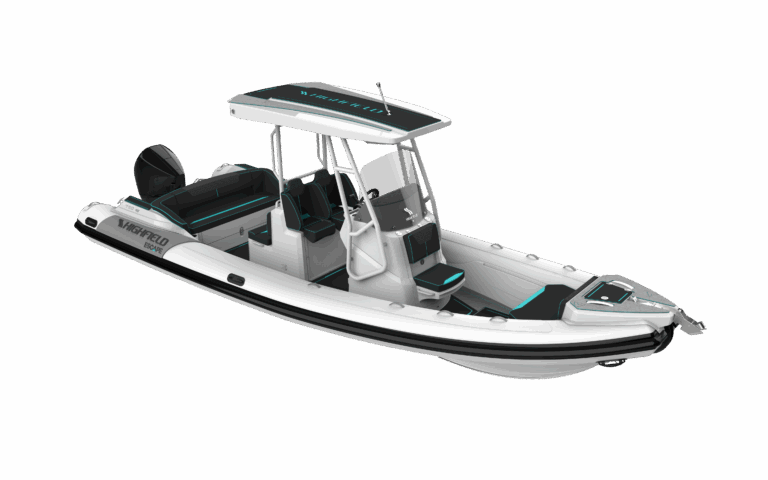An overhaul of Tom’s tie-up revealed much about materials, design and the contractor’s reputation
Most boaters have one very important thing in common. The safety of their boats often depends on it. Their own safety – sometimes their lives – may depend on it. This thing is used on an everyday basis and also during emergencies and in storms. But few of us give it much thought. Few of us have a clue about what makes it good, bad or indifferent, although we should insist that it be “good.” This thing is the pier.
 Polynesian Voyaging Society
Polynesian Voyaging SocietyI have a clue now. I thought I did before, but I learned a few things recently because my pier of 27 years began falling apart. I had been concerned about it for some time because wooden pilings, stringers and crossties don’t last forever in water full of things that eat wood. But the pier was supposedly well built, and it seemed to be doing its job, so I left it alone. As a result, I learned some things about what we should look for when we call a marina to seek shelter in a storm, rent a slip for a season, buy a “dockominium” or even rent a slip overnight. Doing any of these things without giving some thought to whether the pier can do the job you need could cause you big trouble.
My old pier was built with pilings and timber that had been “pressure treated.” That was supposed to be the way to go at the time. I dive regularly to inspect the bottom of my boat. On many dives, I also inspected the pilings. Sure, they were encrusted with barnacles. The pilings where you dock probably also are encrusted. But how do you know what’s under them?

I once docked at a marina, and the outer piling broke off as I warped around it into the slip. The piling was literally pencil-thin under water. So I’d pound my barnacle-encrusted pilings with the butt end of my diving knife to make sure there was plenty of solid wood underneath. There was, I was convinced. Even a few weeks before The Revelation I had reconvinced myself that all was well. Then came The Day.
I felt the pier sag under my feet. I got down on my knees and looked underneath. The tide was very low, the water was relatively clear, and the light was right. So why was it, I wondered, that I couldn’t see the piling as it receded to the bottom. Slowly I realized I couldn’t see it because a section of it wasn’t there. Above and below the void were crusty, tapered, chewed-up pieces of piling. I started checking out other pilings. I found none this bad, but I saw plenty of others missing huge chunks, as if something had taken a big bite out of them. And the surface deep within the bite area wasn’t solid wood but honeycombed.
I didn’t think my pier was on the verge of collapsing. Several days before, an unexpected gust caught me on the beam as I came alongside and I slid along a piling. The pier gave some but no more than you’d expect with a nudging from a heavy boat. But I did think a tropical storm or hurricane might cause a lot of damage – to the pier and to my boat. And as I stood on the end, spread my legs wide and thrust back and forth, the pier moved far more than it had in the past. My dreams of some semblance of financial security for the near term faded like the value of the dollar.
We did some research and called some marine contractors, including Northern Neck Marine Construction (www.northernneckmarineconstruction.com), which gave me a bid. I visited some of its other projects, got good references, checked the state contractor’s license records and chose them. We were very impressed with the work of Frankie Davis, the owner. Now the pier is rebuilt and good, I hope, for many more years. I learned some things in the process that will help me when I go into any other dock and that probably could help you, too.
* * *
As a rule, any pier built in the very early days of “pressure treating” may be suspect, not only because of its age but also because wood preservers hadn’t learned what they now know about infusing preservatives into pilings and wood. Now there are rigorous standards and different types of preservative materials.
The wood to repair my pier came from a huge plant called Wood Preservers Inc. in Warsaw, Va. (www.woodpreservers.com). The company says it ships products to destinations from North Carolina to the Boston area. They are in the business of preserving wood for many purposes, including use in piers.
I spoke with Morgan Wright, the president of Wood Preservers, and he told me to be sure the material, if wood, is manufactured to American Wood Protection Association standards (www.awpa.com). You probably won’t know this, or even care, for overnight dockage, but if you’re contemplating a long-term contract or expecting bad weather, this becomes more relevant. New piers actually may have stamps on the wood or stapled labels indicating this. Wright says these are very rigorous standards derived from the academic world, manufacturers and users.

The standards are referenced in most relevant building codes. Just because the wood is green doesn’t mean it’s going to do the job. Marine borers will quickly consume poorly treated wood and live in it, destroying its structure. (This is what I saw in my pilings.) AWPA standards include different chemicals for different uses and locations, and specified amounts of preservative per cubic feet of wood.
At Wood Preservers, the wood is dried in a huge oven called a dry kiln. Then it goes into a large, sealed, pressurized cylinder (autoclave) and into an impregnation process in which preservatives are forced through the wood at high pressure. The preservative permeates the wood, except for the heartwood. (It does impregnate heartwood a few feet in from each end.) This is a good reason to look for piling caps or painted tops, particularly if the pilings have been cut off for aesthetics after installation. The wood is then put into a vacuum to remove excess preservatives from the wood.
Wright stressed that “everything we produce is done to Best Management Practices approved by NOAA.” He says the industry went to NOAA asking it to establish best practices. The standards promulgated were quite rigorous, but the industry’s practices passed.
After wood is treated, it undergoes a heating process to lock in the chemicals. The chemicals are EPA-approved preservatives and are generally green in color. CCA, for example, would be for pilings, and CA-C for decking; 0.06 pcf would indicate a level of preservative for decking. Wright says 25 years is normally the approximate maximum life span for pier survival in a saltwater environment.
He says wood is the product of choice for many owners and builders of piers because it’s economical, easy to work with, flexible, will allow improvisation as the project presents unexpected challenges, and can be easily drilled, bolted and screwed. He also notes that the use of wood is environmentally friendly. “When we harvest trees, we replant,” Wright says. “It’s about a 35-year cycle.”
There are products other than wood used for pilings, decking and other pier structures. These include rebar-reinforced cement pilings, steel pilings and composite material – not only for pilings but also for decking and substructure. As with wood, there are telltale indications of problems with other materials. For example, crumbling cement pilings with rebar rusting through is a bad sign. And there are various types of floating docks. In some parts of the world these are necessary because of tide range. The purpose here isn’t to recommend any one material or construction method over another; it’s simply to discuss what I experienced with a wood pier, which can teach us lessons on wood and other piers.
Wright recommended galvanized fastening for my pier. Some want the decks nailed down so that in a storm the waves will pull the nails out. Although you lose the deck planking, you still have the underlying structure, which is by far more expensive and time-consuming to replace. Others, he says, prefer screws. These may pull substructure loose with the decking in severe wave action, but if there are proper gaps in the planks, water pressure may just push through. Of course, a pier in a well-sheltered area may not have this wave issue.
* * *
Wright says finding a good pier builder is a first and extremely important step. After watching Frankie Davis rebuild my pier, I began to get a good idea of what it takes to be a good contractor in this highly specialized type of construction. Of course, if you’re pulling into a marina you have no way of knowing about the builder, but there may be clues, which I’ll talk about below. If you’re going to buy a dock or rent one for a long period of time, you can probably get the name of the contractor and do some research.

The equipment Davis used was very impressive. The pile driver barge had a storage area below deck. On deck near one end was a gasoline-powered engine that drove a large hydraulic pump. At the other end was the 30-foot-tall driving derrick and a control station. There, a row of lever-operated hydraulic valves gave Davis what appeared to be very precise control.
He’d set out anchors with cables running through pulleys at each corner and to hydraulically powered drums. With the touch of levers, he could position the rig exactly where it was needed. Using other levers, he could hydraulically lift and lower the jet pipe, lift the pilings, and position and drive them. As I watched him work the levers with his fingers, it almost looked as if he were playing a delicate musical instrument, except for the extremely difficult heavy work being accomplished.
The huge weight that actually did the “driving” traveled up and down in a track on the derrick, but Davis didn’t hit the top of the piling directly with the weight because of the risk of splintering the piling. Between the weight and the piling he used a “cap,” a steel sleeve that fit over the top of the piling on one side and had a renewable cushion of wood on the other side. This cushion took the actual impact.
The derrick barge was serviced by a 12-by-32-foot fiberglass barge with the capacity to store most of the auxiliary equipment (pumps, chain saws, drills, etc.) below and carry a heavy load of stringers, planks and pilings. A 17-foot Carolina Skiff, powered by a Yamaha outboard, served as push boat, utility boat, cargo boat and crew-transfer boat. Other jobs may call for other types of equipment, but this gives you an idea. Unfortunately, sometimes an owner may not allow the best contractor to do the best job.
Some pier owners will only replace old deck planks that have rotted or washed off. This doesn’t address the aging of the supporting structure. And if you see planking renailed into old stringers, be suspicious. Often an old stringer will have splits from aging, and the nail won’t hold well. Long screws may hold much better.
Some pier owners will just have new pilings driven next to the old ones. Pulling out old, rotted pilings can be very difficult. Most of my pilings were eaten all the way through, although you couldn’t tell until you removed stringers and crossties. Then, without the supporting interdependent structure, many would just topple over, leaving stumps rising menacingly from the bottom. This required attaching a chain around the pilings and pulling up with all of the hydraulic muscle of the pile driver.
Often the crew would have to jet water 10 to 15 feet down into the mud around the piling to loosen the mud’s suction, even though the piling was worthless between the bottom and the surface of the water. The jet was powered by a large gas pump to which was attached (using a fire hose) the wand of galvanized pipe. As the pilings came up swaying in the chain, they were controlled and muscled onto another barge to be taken away.
* * *
When you come alongside a pier and notice that some of its pilings are old and some are clearly new, there may be serious cause for concern. Usually when one piling shows signs of failure, others, as in my case, may be close behind.
The depth that a piling is driven into the bottom is a crucial component of a strong pier. In some locations, because of rocks, hard sand or other obstructions such as roots or old buried tree trunks, getting a piling in deep can be next to impossible. Fortunately our bottom was free of obstructions and was good gray mud. As a general rule, the deeper the piling is driven into the bottom, the more lateral stress it’ll take (as when boats are pulling it in a storm wind) and the less concern there will be for ice pulling it out.

If you plan to ride out a storm or enter a long-term rental agreement for a dock, particularly if you are in a rocky area (as are many places in New England), ask about piling depth and the equipment and reputation of the builder. Normally you can’t tell by looking at the pier how deep the piling is in the bottom, but the reputation of the builder and the equipment used should give you an idea.
Some prefer to have pilings driven in “butt end first.” This means the wider end goes into the mud and the narrower end is at the top. The theory is that as the mud settles in, the piling is unlikely to be pulled out by ice or anything else. Others say that unless you’re in areas of long, hard freeze, with very thick ice around the pier, this isn’t important if you drive the pilings deep enough. And it’s easier to get them deeper, particularly if there are obstructions beneath the bottom, if the smaller end goes down first.
A driver seldom knows whether and when he’ll run into an obstruction. Davis notes that if you drive the large end down first, there will be more of a void between packed mud and the piling as the piling tapers. This can cause the piling to shift in the weeks to follow because it takes some time for mud to settle in solidly and tightly around the pile.
He also says wood-boring worms generally penetrate the exposed pile from the mud to just below the surface. Having the thicker part of the piling up gives the piling more life in the far future because there’s more treated material through which worms must penetrate before structural strength is seriously impaired.
We easily saw the value of deep-driven pilings. Pilings at the shallow-water end of our pier had pulled from the bottom in surges from various storms through the years. The original pier builder hadn’t been able to get his pile driver into that shallow water, and he apparently didn’t have adequate jetting equipment. Those shallow piles were in only a foot or two of mud.
Several years earlier, I had “fixed” the problem by driving, with a sledgehammer, old steel fence posts deep into the mud next to the errant pilings and bolting them to those pilings. The mud’s suction on those posts was so great the workers had to use the pile driver to get them out.
Davis couldn’t get his rig into shallow water, either, but he used his pump and long wand and jetted those pilings in deep using a “man driver” to help. This is a heavy weight within a steel cap that you insert over the top of the piling. The cap has long handles on each side, and two or more very tough guys pick it up and drop it on the piling over and over again for the same effect (although with less force) than a pile-driving derrick. A pier builder with the right equipment for the job and a good reputation probably won’t cut corners, such as failing to drive ’em deep.
* * *
There are other clues as to whether a pier was built well. For example, are the pilings relatively straight? Nature seldom makes a perfectly straight tree. They can be trimmed to a certain extent, though seldom perfectly. I was impressed with what it took to drive a piling and amazed that Davis could get them in straight.
The piling is first lifted, dangling in the air by chain, high up on the pile driver and then lowered and muscled into the precise spot where it belongs. Then it may be affected by an uneven or junk-covered bottom, current and wind as the actual driving begins.
I watched Davis. Before he struck the first blow, he leaned off the forward end of the barge with a long leveler, checking to make sure the piling was straight. And then, depending on the circumstances, he’d use the leveler again, often after each blow, to make sure it was going down straight. If it wasn’t, he’d correct the problem, either pulling it up and starting over or using a block and tackle to straighten it. Crooked pilings are one indication of a poor job.
Deck planking, if it’s wood, also can give some clues as to the quality of the pier. If you bend down and look at the end grain of the planks, you’ll notice the curved rings that indicate the growth cycles of the tree before it was cut. If the ends of the rings are pointing down, the side of the plank that would have been closest to the bark is up and some feel this side weathers better. But others are concerned about “cupping.” As a board dries, they say, it has a tendency to cup toward the bark side.
If cupping occurs, you would want the middle of the plank to be up so water doesn’t settle in it. However, in the real world it’s inevitable that many planks will have blemishes such as knots on one side or another, and the careful builder, whatever his theory as to the above, may choose to put the best side up. To me, this all means that if I see a pier where all or most of the planks are oriented one way, it gives me a clue that the builder knew his business and was trying to do it well.
Another important clue is found in the attachment of the longitudinal stringers – the long beams fastened to the pilings and running the length of the pier – and the crossties running across, attached to pilings on opposite sides of the pier. The stringers and crossties should be bolted through the pilings, with heavy-duty galvanized bolts and washers. (You’ll seldom see stainless because of the expense and other issues.)
On some decks, only one set of these timbers is bolted; the other is just nailed. On some, the stringers aren’t overlapped and through-bolted to each other at the overlap. This is all very important because the components of a pier work together to give the whole stability and strength. Obviously, the heavier these timbers the better, depending on the usage of the pier.

A sure clue to whether a pier was built by someone experienced in the field can be found if any of these timbers, or anything else, extends beyond the outside of the pilings. Your boat needs to be able to ride against, slide along or warp around pilings. Beam ends should be well within the outer piling wall to avoid damage to the boat. And bolts should be recessed well into the face of the piling wherever a hull or rub rail might impact. I’ve been amazed at the piers I’ve seen where this practice wasn’t followed. It indicates to me that the builder wasn’t very familiar with this type of construction and that there may be other serious deficiencies.
Another interesting telltale is the height of the pier pilings. Obviously, mooring pilings should be high because of storm surges, but the smaller pilings, the primary purpose of which is to hold the pier up, are usually considerably shorter. Some pier builders cut them off to only a few feet higher than the top of the decking. Some cut them off at the deck level. “It looks prettier that way,” they say.
And many owners agree. But there’s more to it. It is difficult to tell whether the pilings have been driven in crooked if they aren’t extending well above the deck. I’ve seen piers under construction with pilings canting in all directions until they were sawed off level with the deck or close to it. Then they looked fine unless you took a hard look under the pier at very low tide.
The devil is in other details as well. I once stood on a very nice-looking marina pier to which Chez Nous was tied for a storm. It was very windy. I felt the boards under my feet move as gusts hit my boat, blowing it off the pier. I looked down and noticed that the very sturdy deck planking, through which the cleats were bolted, was pulling out of the stringer underneath. The plank was nailed to the stringer, and the nails weren’t able to hold that boat in those gusts.
There are different ways of attaching cleats to piers, some good and some bad. For example, on some floating piers cleats may be bolted through the deck material, which may be too weak. We recently tied to a floating dock in Camachee Cove Yacht Harbor in St. Augustine, Fla. The cleats there were bolted through a triple layer of 2.5-by-7.5-inch stringers, overlapped and bolted to each other and to other structure. I like the strength of this.
* * *
I’ve shared some of the lessons we learned rebuilding our pier. There are many theories as to the best way to build a pier, and I don’t suggest that the theories and methods I’ve discussed here are the only good ones. Some would be inappropriate because of the type of bottom, the severity of winters, the type of boat using the pier and many other variables.
But the bottom line is that with all we invest in our boats, it’s important to invest some time in considering where we tie them. If you’re coming alongside for a storm, the need is obvious. If you’re staying for a while, it’s safe to assume that during your stay the storms will come. And even if they don’t, it’s nice to have a strong pier if someone else (like me) comes crashing into the slip next door.
Tom Neale is technical editor for Soundings and lives aboard a Gulfstar 53 motorsailer. You can buy his book, “All in the Same Boat,” at www.tomneale.com
This article originally appeared in the February 2011 issue.

